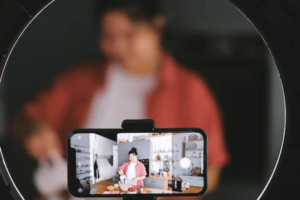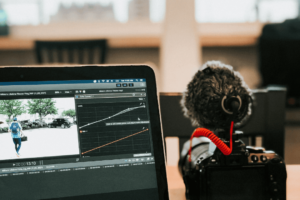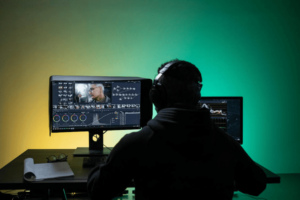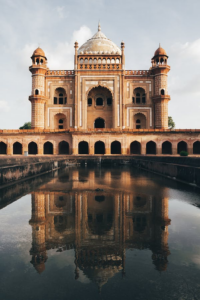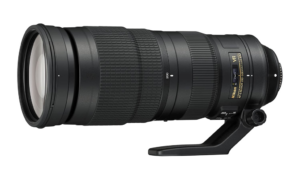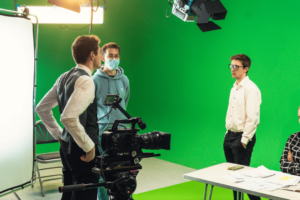Smooth, stable shots are a simple approach to adding professionalism and quality to your movie or photography. Unless you’re purposely using a wobbly or blurry shot for aesthetic effect, the capability to consistently take solid photos is expected of anyone working in the filmmaking or photography industries.
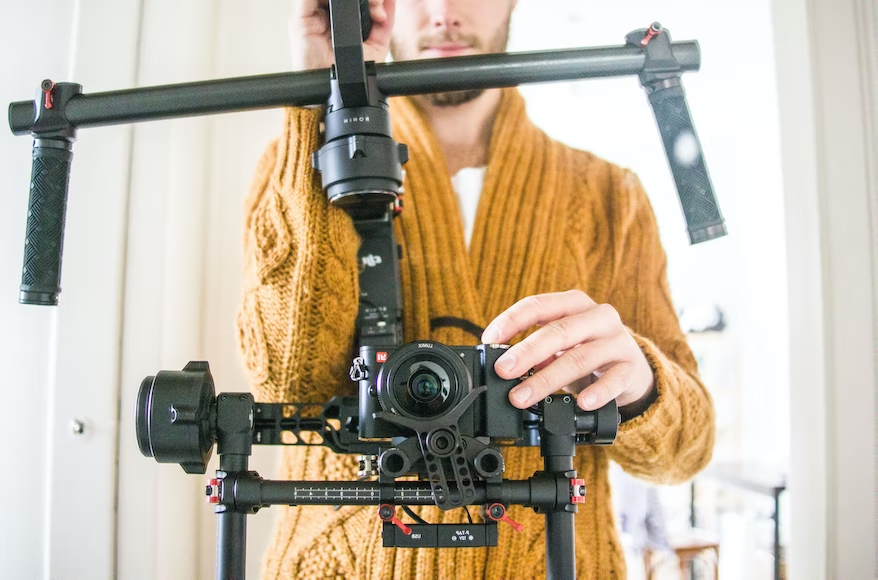
Fortunately, thanks to technological improvements, images are simply looking better over time, and a shaking hand is a simple mistake to correct with the right camera appliances. For that, a video camera stabilizer is a beautiful tool for steadying shots.
What Exactly Is a Camera Stabilizer?
A camera stabilizer is a component of camera equipment that assists in stabilizing your camera during photography. When you keep your camera on these rigs, any undesired movement that might make your shot look tacky or unprofessional is minimized or eliminated.

While there are several distinct types of stabilizers, they all work on the same basic principle: the stabilizer’s weight and movement serve to counteract the load and motion of the camera. To correctly steady your camera and prevent its movement, you may need to adjust your stabilizer.
Camera stabilization has progressed significantly since the classic counterbalanced mass stabilizer. A classic stabilizer is a pole with movable weights at the bottom and a camera mount at the top. Counterbalanced mass stabilizers have lately been phased out in favor of more sophisticated camera stabilizers like the Beholder EC1 and the Zhiyun Crane.
A camera stabilizer, such as the Crane or the EC1, weighs about 2.2-2.5 pounds. The batteries can be folded and stowed in a backpack. In addition, these stabilizers work with various cameras and lenses, are easy to set up, and can be operated remotely. For today’s competitive filmmaker, the significance of a modern camera stabilizer has never been more crucial.
The Advantages of Using a Camera Stabilizer
People can quickly locate a flat surface to lay their cameras on and use timers to take images and films. This strategy, however, limits the number of photos and movies that you may take with a camera.
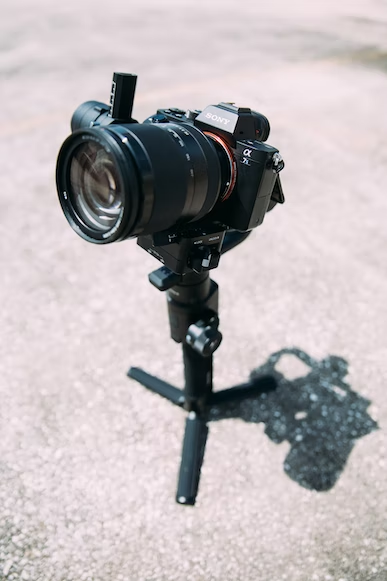
A camera stabilizer aids users in capturing professional-looking photographs. Take note of how your hands frequently shake when shooting shots and how these motions are reflected in the images you obtained. Taking photos with your hands is simple, but it is not always the unique approach to capturing high-quality shots.
A camera stabilizer also helps to reduce vibration while holding the phone. It also enables users to snap photos and videos from a greater distance. Some camera stabilizers even offer additional functions that allow users to shoot in various modes. For example, some models have auto-face identification and a time-lapse capability to make the photography process more accessible and enjoyable.
A camera stabilizer’s obvious advantage is its ability to stabilize photos, both static and dynamic, better than a camera operator alone. On the other hand, camera stabilizers provide various other advantages to camera users. These are some examples:
- The capacity to photograph from multiple angles would not be achievable without a stabilizer.
- A more convenient and comfortable manner for the camera person to hold the camera.
- The ability to catch pictures that move smoothly.
- Provide a location for extra camera accessories to be attached.
How Does a Stabilizer Do Its Job?
When the camera moves, the sensor must record the shaking scenario because the sensor is incapable of stabilizing the context (what is being recorded) in such a short period. Furthermore, you must reduce the resolution for the camera to record it. It’s a big deal, but let’s not get too far into it!
To summarize, if both the camera and the image (e.g., you) are moving, a camera cannot record the actual dimensions of a 3D scenario.
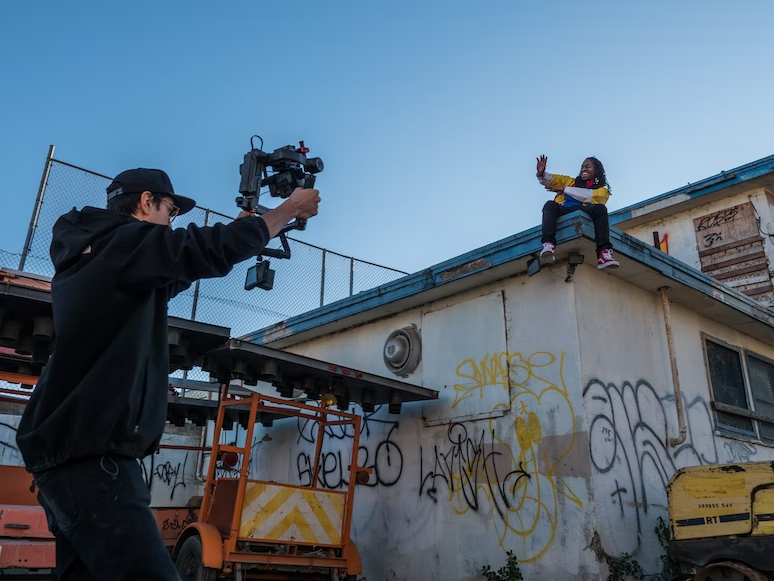
You can now limit camera and image instability by striding like a mountain lion. So how can you do that if you’re at the zoo and suddenly have to flee from a wild monkey?
This is where stabilizers come into play. In their various shapes and forms, stabilizers provide stability to the camera due to their design. There are multiple types of camera stabilizers based on their structure.
Types of Camera Stabilizers
Handheld stabilizers, 3-axis gimbals, and vest stabilizer systems are the three primary types of camera stabilizers. Each is discussed further below.
Handheld
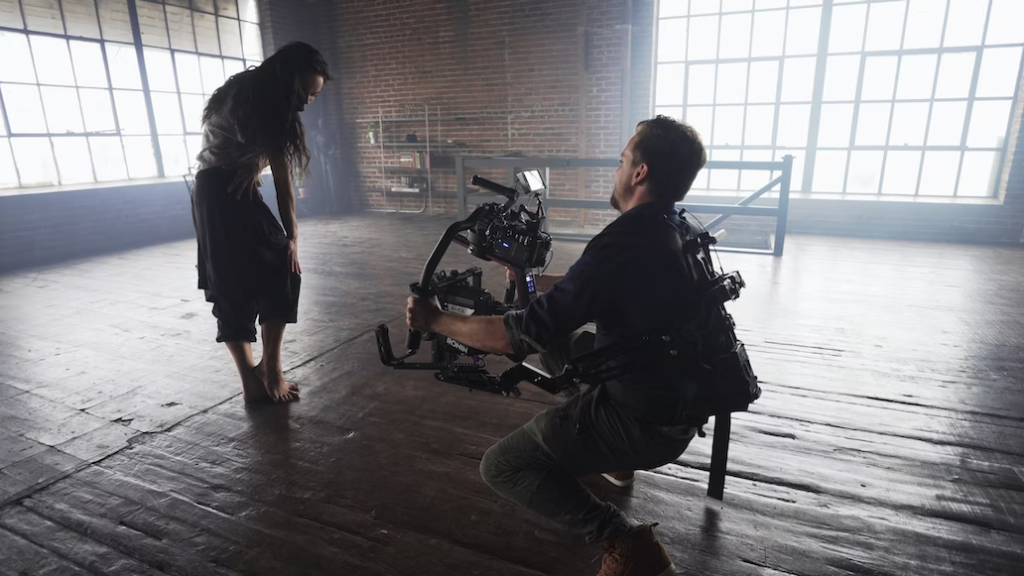
A handheld camera stabilizer is a device that adds steadiness to a camera. Besides employing a 3-axis gimbal or a vest system, stabilizers are connected to the lens and held by the camera operator. A handheld camera stabilizer can help to reduce some shakiness from pictures, but the camera operator must still keep the camera and stabilizer stable while filming.
Because different handheld camera stabilizers correspond to different camera weights, it is critical to examine the maximum weight of the stabilizer you will be using.
3-Axis Gimbal

A 3-axis gimbal contains three axes that aid to stabilize shots during filming, smoothing out the shakiness caused by filming moving scenes on uneven surfaces or the instability of a camera operator’s hand. The skew (pan), pitch (tilt), and roll axes of a gimbal each stable the camera on a distinct plane of motion and can be employed while capturing various trailing or moving shots.
3-axis gimbals are available in both motorized and non-powered versions. Motorized 3-axis gimbals help optimize the camera adjustment procedure but keep in mind that they must be charged at all times.
Vest Stabilizer Technologies

The camera operator wears a vest stabilizer system attached to the camera. While the camera person is walking, this sort of stabilizer keeps the camera and shot steady, resulting in a seamless shot. These stabilizers are most commonly used with large, high-end film production cameras, but you can utilize them with other types of lenses. Vest stabilizer systems are widely known as Steadicams, but this is not the name of the camera type but rather a famous brand.
The arm, vest, and sled are the three primary components of vest stabilizer solutions that operate together to stabilize the camera.
Arm
An iso-elastic arm links the sled to the vest and is the initial element of a vest stabilizer system. The arm moves the camera away from the camera controller, keeping the two apart. This enables the camera to remain stable even when the camera person is not present. The arm is made up of two sections joined by a hinge, and these, along with springs inside the arm and the sled’s downward pushing weight, help maintain the camera stable in the same position even when the person carrying it moves.
Vest
The vest is a component of the camera operator’s vest stabilizer system. The vest is designed to fit snugly over the camera operator’s shoulders, across the chest, and around the waist. The vest is linked to the camera by the stabilizer’s arm. The camera is placed directly next to the camera person, who operates it from there.
Sled
The sled is the final part of a vest stabilizer system. The sled is the portion of the stabilizer that is directly attached to the camera. It comprises a pole that the videographer uses to adjust the camera’s position and a monitor and charger at the pole’s base. The sled is the significant component of the stabilizer that balances the camera by shifting the camera’s center of gravity to the sled instead of the camera itself and boosting the camera’s resistance to spin.
Camera Stabilizer Options (The Detailed Comparison)
Among the several camera stabilizers available, some can be held in your hand, some may be attached to oneself, and some can fly!
What’s perplexing is how they operate and how much they cost.
Check out this chart for a quick look at all of that information:
| Stabilizer Type | Mechanism | Cost |
| Top Handle | This is a short ‘L’-shaped handle. The most basic stabilizer is available in the market. Hook one tip of a camera and secure the other rod here. The two rods are at a 90-degree angle to one another. These handles are held around in front of the camera. | This costs between $15 and $25. This is the most affordable way to stabilize a camera. |
| X-Grip | It has the shape of a ‘U.’ A camera is positioned on one of the ‘U’ arms such that it is parallel to the arms. You can move with it in the same way that you would with the top handle. Other stabilizers are similar to this in that the open ends of the ‘U’ are joined, giving you a double-handed grasp. | This costs between $15 and $30. |
| Handheld Stabilizers | These are some of the most frequent stick-like stabilizers you’ve seen. You can adjust the camera around this axis and add weight by extending the stick. It includes a Gimbal. | A Flycam Redking costs between $200 and $300. |
| 3-Axis Gimbals | These stabilizers may make changes automatically based on gravity. These can appear in a variety of shapes. Some cameras are supported on a stick, some on rectangular forms, and many feature two-handled support structures. Feiyutech AK-4000, Zhiyun Crane-2, and more models are examples. | Depending on the model, it can range from $300 to $800. |
| Vest System Stabilizers | As the name implies, it is a vest system that, rather than stabilizing, supports the stabilizer. It has gimbals with many axes. What distinguishes it is the presence of an iso-elastic arm attached to the vest. This, as well as springs, balance the camera. The arm can emerge from the vest’s side or as a forward-leaning arm from the rear to support the camera with a spring. When discussing vest stabilizers, the term “Steadicam” comes to mind. The mechanical arm lifts the camera, conducting more creative work. | Depending on your equipment, the cost ranges between $300 and $800. |
Some Assistive Devices
Some stabilizers come with single shoulder support. News reporters primarily use this. The Revo SR-1000, which costs $89, is one such example. These aren’t three-axis gimbals. They do, however, support the right of the camera in certain other regions.
DSLR Rigs are also appropriate here. These can be carried on one shoulder as well. This, too, bears the weight and retains the camera, and it is entirely mechanical. Unfortunately, it’s not a great stabilizer. The Neewer model costs $35.
Spider Stabilizer is a type of stabilizer. It’s called that because that looks like it. Instead of eight arms, it has two grips side by side, with the camera positioned in the middle. The camera is mechanically moved and cannot adjust on its own. They are, nonetheless, highly adaptable. They are approximately $95.
What is a Gimbal Stabilizer?
The gimbal is a small camera stabilizer that works with computer algorithms to maintain the footage smooth and free of shakiness. It would be an understatement to say that it has been a breakthrough for the Indie filmmaker or inquisitive videographer!

They are outfitted with a camera mount and motion sensors to detect unwanted movement. When the gimbal camera stabilizer detects movement, it utilizes an algorithm to manage its swivels and counter it as it occurs. As a result, the footage is stable since the pivots keep the camera from wobbling here and there.
Gimbals are smart enough to distinguish between an intended pan and an unintentional camera movement. An excellent gimbal is also extremely silent. They don’t produce noise since the brushless motors that rotate the camera do so quietly – which is what you want and a significant advantage of getting used to a gimbal as soon as possible.
The Benefits of Using Gimbals
- Gimbals improve the quality of your movie and make it look more cinematic.
- You can use larger cameras without worrying about them falling over or zooming in on close-up views.
- Gimbals are ideal for filmmakers, photographers, and anyone who wants to take excellent photographs.
Steadicam vs. Gimbal
If you’re wondering if Hollywood uses gimbals, look no further. The answer is, “they don’t.” Instead, Hollywood cinematographers employ a device known as a Steadicam to obtain smooth footage. We mentioned these at the beginning of the post.
These are significantly more expensive and difficult to operate than a gimbal. This is because the filming equipment used in Hollywood is too large and heavy for a traditional gimbal. On the other hand, gimbal technology is formed based on Hollywood Steadicams.
Things to Look For When Choosing a Stabilizer
With the benefits of greater quality and competence that a camera stabilizer provides, it’s essential to consider adding one to your camera gadget collection. But, with so many alternatives, how can you know which one to pick? Consider the following factors when selecting a camera stabilizer to make the best possible option.
Why Do You Need a Stabilizer?
Before you start looking at various models and designs, ask yourself, “Why do I want a stabilizer?” What kinds of pictures and projects will you use it for, or how often will you use it? Do you have a compelling reason to get one, or are you getting one merely on occasion you need it? A suitable stabilizer is an investment; if you don’t have a genuine need for one and wouldn’t use it, either start with a low-cost stabilizer or wait till you do.
Identifying your intended purpose for a stabilizer will assist you in choosing a model and kind that matches.
Photography or Video?
While camera stabilizers are most commonly employed in filmmaking, they can also be utilized to stabilize photographs. When selecting a camera stabilizer, it’s critical to consider whether you’ll be shooting film or pictures with your stabilized camera. A stabilizer used to stabilize a static shot in photography or a movie will be quite different and might be less intricate than the one used to stabilize a moving picture.
In addition, camera stabilizers for photography are often smaller and more portable. In contrast, a stabilizer for filmmaking could be one of these or a bigger, more sophisticated stabilizer, such as a camera stabilizer vest and arm.
Compatibility With Camera
A camera stabilizer is usually attached to your camera and secured to the device. However, just as no two cameras are the same, no two stabilizers are the same. As a result, among the first things you should do is make sure your stabilizer is suitable for the camera you’re using! A costly, high-end stabilizer will be useless if it is not correctly attached to your camera.
If you’re shooting with a smartphone’s camera, consider a phone camera stabilizer made exclusively for use with phones. Other stabilizers are made to work with DSLR or mirrorless cameras; check for stabilizers made expressly for your camera.
Accessories Compatibility
Your stabilizer rig may also be compliant with other camera accessories, depending on what type of stabilizer you select. For example, do you want to add an extra light or mic to your camera setup? Select a stabilizer that can support these additional accessories. If you don’t need to attach any other camera equipment, just about any stabilizer should suffice.
Is it Motorized or Non-Motorized?
There are two kinds of camera stabilizers: motorized stabilizers and non-motorized stabilizers. A motorized stabilizer uses an electric motor to offset your camera’s motion while shooting automatically. A non-motorized stabilizer, on the other hand, is powered by gravity and mechanically balances the camera.
Non-motorized stabilizers can be adjusted manually, giving you greater control over the stabilizer and shorter than a motorized stabilizer. However, if you get a motorized stabilizer, keep in mind that you’ll need to charge the batteries or bring new ones with you on shoots—the last thing you need is for your stabilizer to die in the middle of a shot.
Portability
Stabilizers exist in various shapes, sizes, and weights, making some more accessible than others. How mobile do you require your stabilizer to be? A lighter handheld variant may be preferable if you hold your stabilizer and camera for extended periods. However, if your shots are brief, or you’ll be attaching your stabilizer to a different dolly or automobile, you can get away with a larger, heavier model.
Another factor to consider is if you want to take your stabilizer with you on the road; if so, you’ll wish for a portable one that can fit in your bag or car.
Budget
Since there are so many different types and models of stabilizers available, pricing will differ depending on the kind and stabilizer you select. Therefore, before purchasing a stabilizer, make a budget for yourself and buy one that fits within that budget. Even if you have to start with a lower-quality stabilizer, keep in mind that you can always update later if the necessity arises.
Best Camera Stabilizers Today
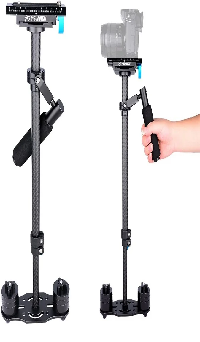
The Yelangu S60T is a primary yet powerful camera stabilizer. It has a straightforward design that gives a sense of stability not seen in more complex models.
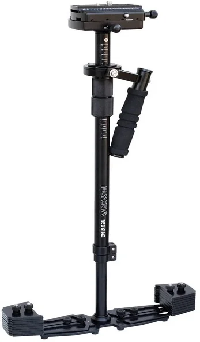
The Glidecam HD-Pro isn’t cheap, but it’s one of the best handheld stabilizers for mirrorless and DSLR cameras on the market right now. It’s professional-grade equipment at a professional-grade price.
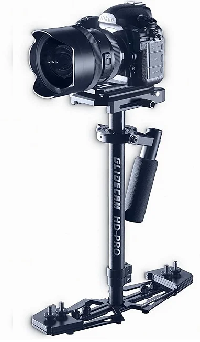
The flycam Redking stabilizer is a well-made piece of gear. It also has several outstanding characteristics that make it one of the best stabilizers available. It’s not the cheapest, but it’s a terrific buy.
5 Best Camera Stabilizers For Mirrorless & DSLR
Camera Gimbals – How Good They Are?
Stabilizer VS Handheld Cinematic Camera Moves
Conclusion
There are numerous techniques to improve one’s production value, including better optics and filters, studio and set lighting, greenscreens, and so on. In addition, camera stabilization has made great strides and is now both inexpensive and available in various configurations.
There are numerous camera stabilizers to select from, but you must ensure that you receive the most value for your money.
